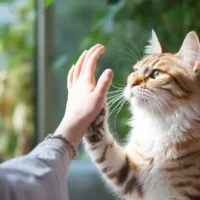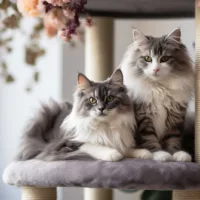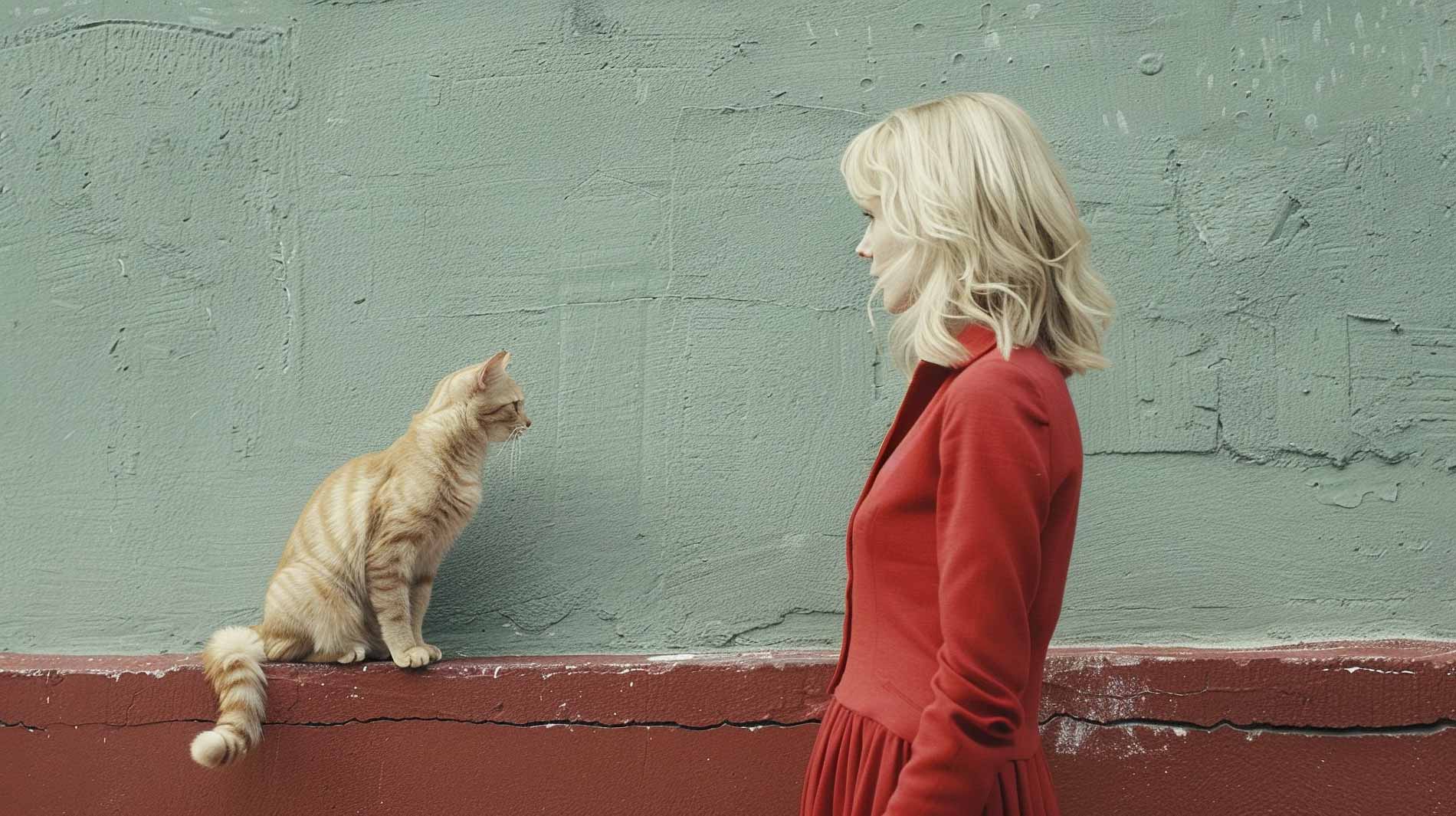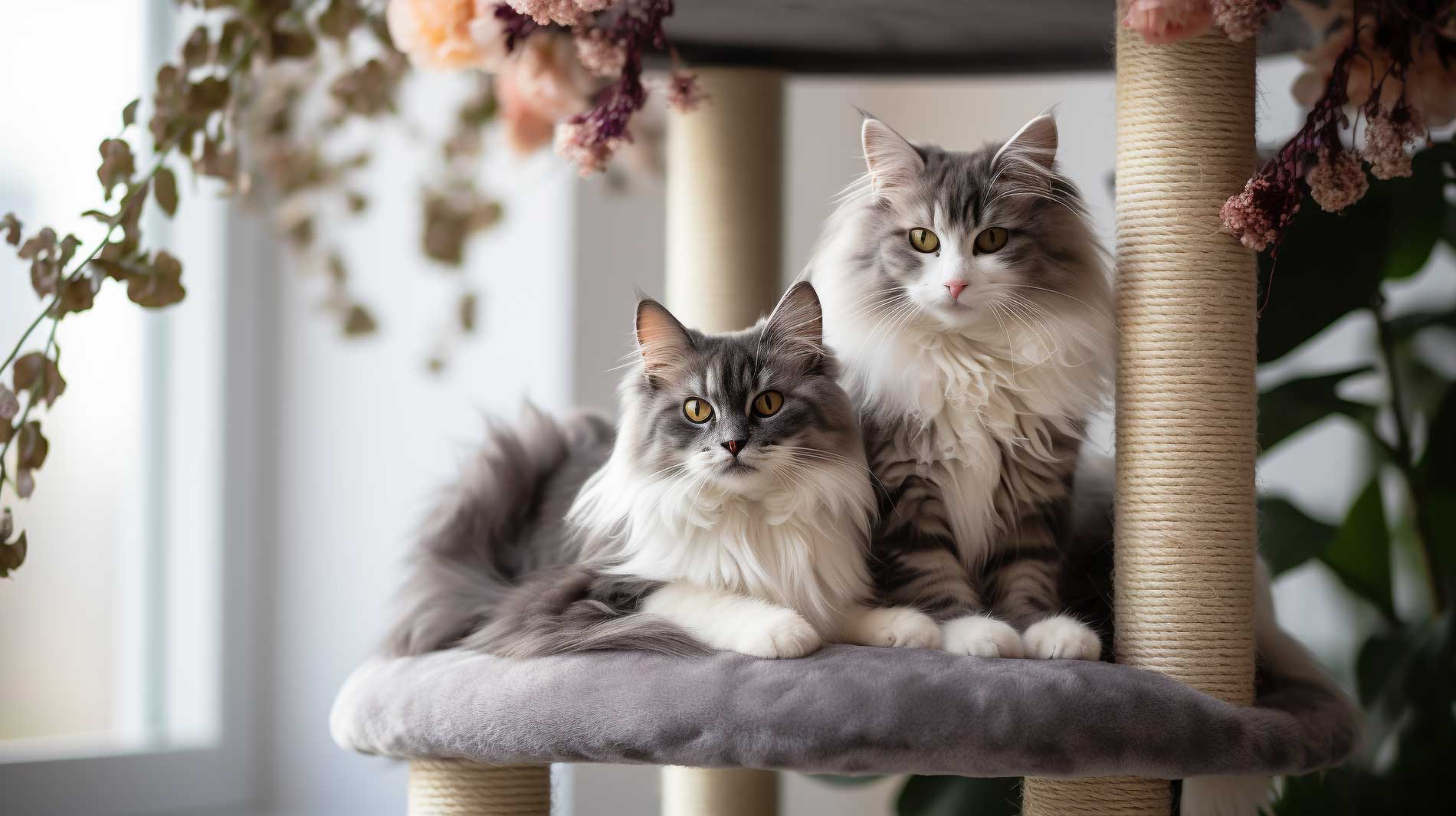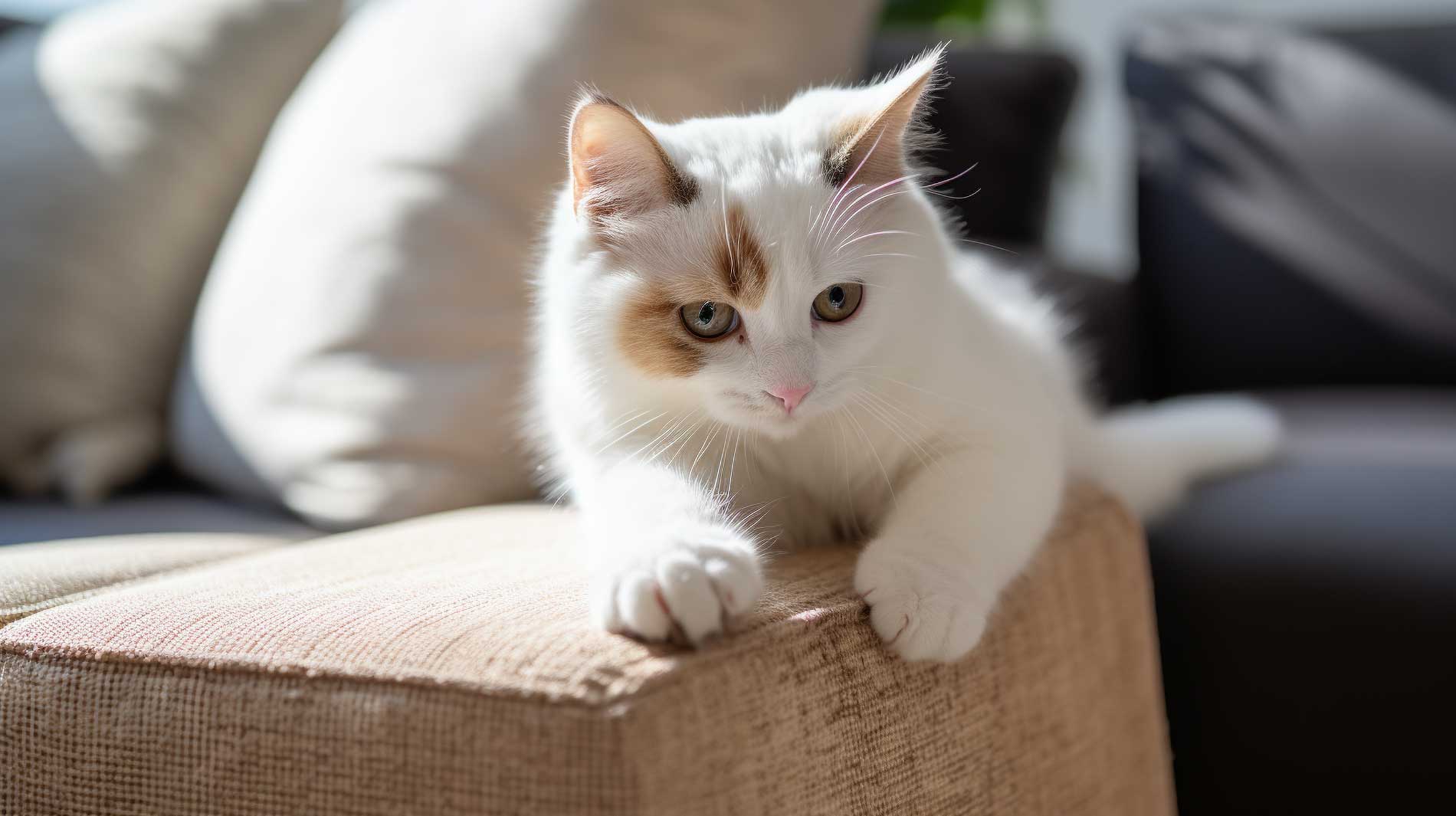Do you need to improve your feline communication skills and strengthen the bond with your cat? Our cat language crash course helps you understand the secrets to your cat’s body language and meows. You’ll soon be a cat whisperer, able to meet their needs, comfort them when they’re upset, and share many joyful moments together.
Cat body language
To understand your cat means to become aware of any signals your cat sends you and then be able to interpret them correctly. The first step to becoming an expert in your cat’s secret language is observing its posture, ears, eyes, and tail.
Posture
- Relaxed body posture: When your cat is feeling comfortable and at ease, its muscles will be relaxed, and its tail will be held loosely or upright with a curved tip. You can now approach and share in its joy!
- Crouched position: Recognize an uneasy cat by its tense muscles, tightly held body, and crouched stance. By identifying its anxiety, you’ll know when to give it space and help it feel secure.
- Flattened or arched body: If your cat is displeased or upset, it might lie down with a flattened body or arch its back while standing. Now that you understand its distress, you can back off and avoid potential conflicts.
A cats tail movements
One of the most expressive parts of a cat’s body is its tail. Paying attention to tail movements can give you valuable insights into your cat’s emotional state.
- Straight up: When a cat holds its tail straight up, it’s usually a sign of happiness or curiosity. This posture can also be an invitation to interact. If there’s a curve in it (the tip of the tail points towards the cat’s head), it’s super happy to see you!
- Flicking, swishing, or waving: A flicking or swishing tail can indicate annoyance, frustration, or agitation. Unlike dogs, who wag their tails when they’re excited, cats “wave” their tails to express these more negative emotions. It’s best to give your cat space when you see this.
- Between legs: If your cat’s tail is tucked between its legs, it’s likely feeling afraid. Back up and give her some air!
- Puffed up: If your cat’s tail is puffed up and bristled, it’s a sign of fear or aggression. In some cases, your cat’s whole body might appear puffy, as if to send a message of “look how big I am” to a perceived threat. If a cat looks puffy and is kind of laying down at the same time, it could be getting ready to fight and should definitely be avoided.
- Quivering, upwards: Don’t mix this one up with a puffy-looking tail. Your cat is just so excited to see you and wants pets from you so badly right now! This is usually accompanied by little happy paws dancing and meowing.
All cats respond to overstimulation in different ways, but with that said, the tail is the place to start.
Jackson Galaxy
Ears
A cat’s ears are another important indicator of its emotional state and help you understand the cat language.
- Forward-facing: When a cat’s ears are forward and upright, it’s usually a sign of alertness, curiosity, or contentment.
- Flattened or pinned back: If your cat’s ears are flattened against its head, it may be scared, anxious, or angry. Flattened ears can also be a sign of overstimulation, especially if they occur while you’re petting your cat. If you notice your cat’s ears going flat during petting, it’s best to stop and give them a break.
Eyes
Cat eyes can also be quite expressive in terms of how it’s doing, especially when it comes to their pupils.
- Slow blinking: When your cat blinks slowly at you, it’s considered a sign of affection and trust. It’s like a kitty kiss! Blinking back can help deepen your bond.
- Dilated pupils: Dilated pupils can indicate excitement, playfulness, fear, or aggressiveness depending on the context.
Voice and sounds
Learn to interpret the diverse range of cat vocalizations, and you’ll gain invaluable insights into your cat’s feelings and needs.
- Meowing: Cats meow to communicate with humans, with pitch and tone variations indicating different emotions or desires. Respond promptly to make your cat feel understood and loved.
- Chattering or chittering: Cats often make this sound when watching birds or other prey animals. It’s thought to be an expression of excitement or frustration at not being able to catch the prey.
- Purring: Purring often signals contentment, but it can also indicate anxiety or pain. In that case, it’s a method to self-soothe. Be there to comfort and support your cat when needed.
- Hissing and growling: These sounds mean your cat is angry or scared. Recognize these cues and act accordingly to maintain a peaceful environment.
Feel like a cat whisperer yet? By understanding your cats body language and understanding your cat’s sounds, you’ll have a happier life together with your furry friend.

